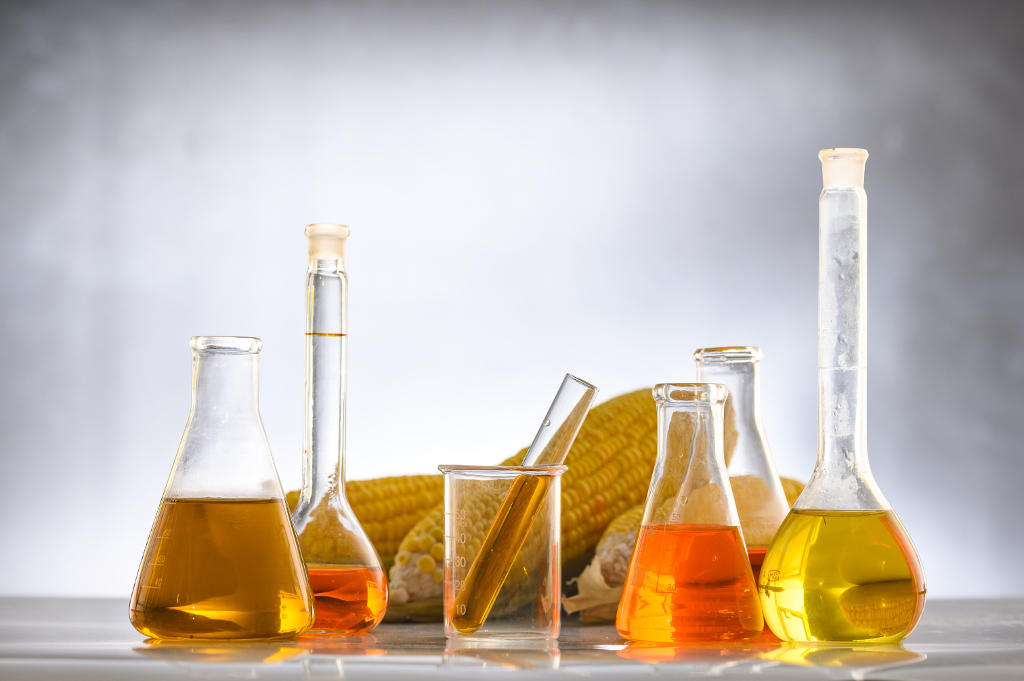
In our previous blog posts we have discussed resource recovery from waste related to the wastewater treatment and showed improved and enforced regulations have a positive impact on water quality and public health. Now we show that clever catalytic processes can be used to extract valuable commodities from waste agricultural products.
Low-cost waste biomass can serves as renewable source to produce a sustainable alternative to fossil carbon resources in order to meet the need for the environmentally friendly energy. For example, the C2 and C4 ethers derived from carboxylic acids obtained from biomass are promising fuel candidates. It has been reported, that when using ethers biofuel parameters such as ignition quality and sooting have significantly improved compared to commercial petrodiesel (>86% yield sooting index reduction). Ignition quality (cetane number) was improved by more than 56%.
The scientists from National Renewable Energy Laboratory, together with their colleagues from Yale University, Argonne National Laboratory, and Oak Ridge National Laboratory are working on a joint project with the goal of co-optimization of fuels and engines. The research focuses on improving fuel economy and vehicle performance while at the same time reducing emissions through identification of blendstock derived from biomass.
In their recent article, published in the renown journal PNAS, a novel molecule, 4-butoxyheptane, has been isolated in a high-yielding catalytic process from lignocellulosic biomass. Due to its high oxygen content, this advantageous blendstock can improve the performance of diesel fuel by reducing the intrinsic sooting tendency of the fuel upon burning.
The research team has reported a “fuel-property-first” approach in order to accelerate the development process of producing suitable oxygenate diesel blendstocks.
This rational approach is based on following steps:
- Fuel Property Characterization – includes mapping and identification of accessible oxygenates products; predicting fuel properties of those products a priori by computationally screening
- Production process – development of the conversion pathway starting from biomass. Includes continuous, solvent-free synthesis process based on a metal/acid catalyst on a liter-scale production of the chosen compound
- Testing and analysis – with the goal to validate and compare fuel property measurements against predictions
Fuel properties of target oxygenates that have been investigated are related to the health- and safety- aspects such as flash point, biodegradation potential, and toxicity/water solubility, as well as market and environmental aspects such as ignition quality (cetane number), viscosity, lower heating value and sooting potential reduction with oxygenated blendstocks. As a result, 4-butoxyheptane, looked as the most promising molecule to blend with and improve traditional diesel. It has been shown, that the fuel property measurements largely agreed with predictive estimations, validating accuracy of the a priori approach for blendstock selection.
The mixture at 20-30% blend of 4-butoxyheptane molecule into diesel fuel has been suggested as favorable. The improvement in autoignition quality as well as significant reduction of yield sooting index from 215 to 173 (20% reduction) demonstrates that the incorporation of this molecule could improve diesel emission properties without sacrificing performance. In terms of flammability, toxicity, and storage stability, the oxygenate fuel has been evaluated to be at low-risk.
Life-cycle analysis show that this mixture could be cost-competitive and have the potential in significant greenhouse gas reductions (by 50 to 271%) in comparison to petrodiesel.
As research is a perpetual process, more of it is necessary and should include testing of the bioblendstock in an actual engine and production of the biofuel in an integrated process directly from biomass.
(Mima Varničić, 2020, photo: Pixabay)




